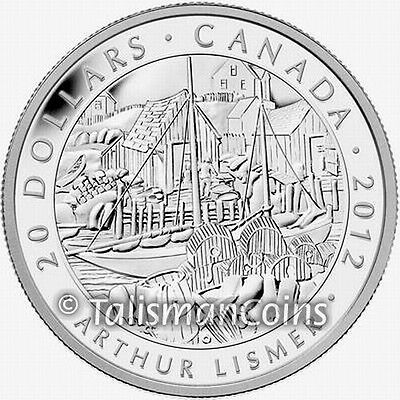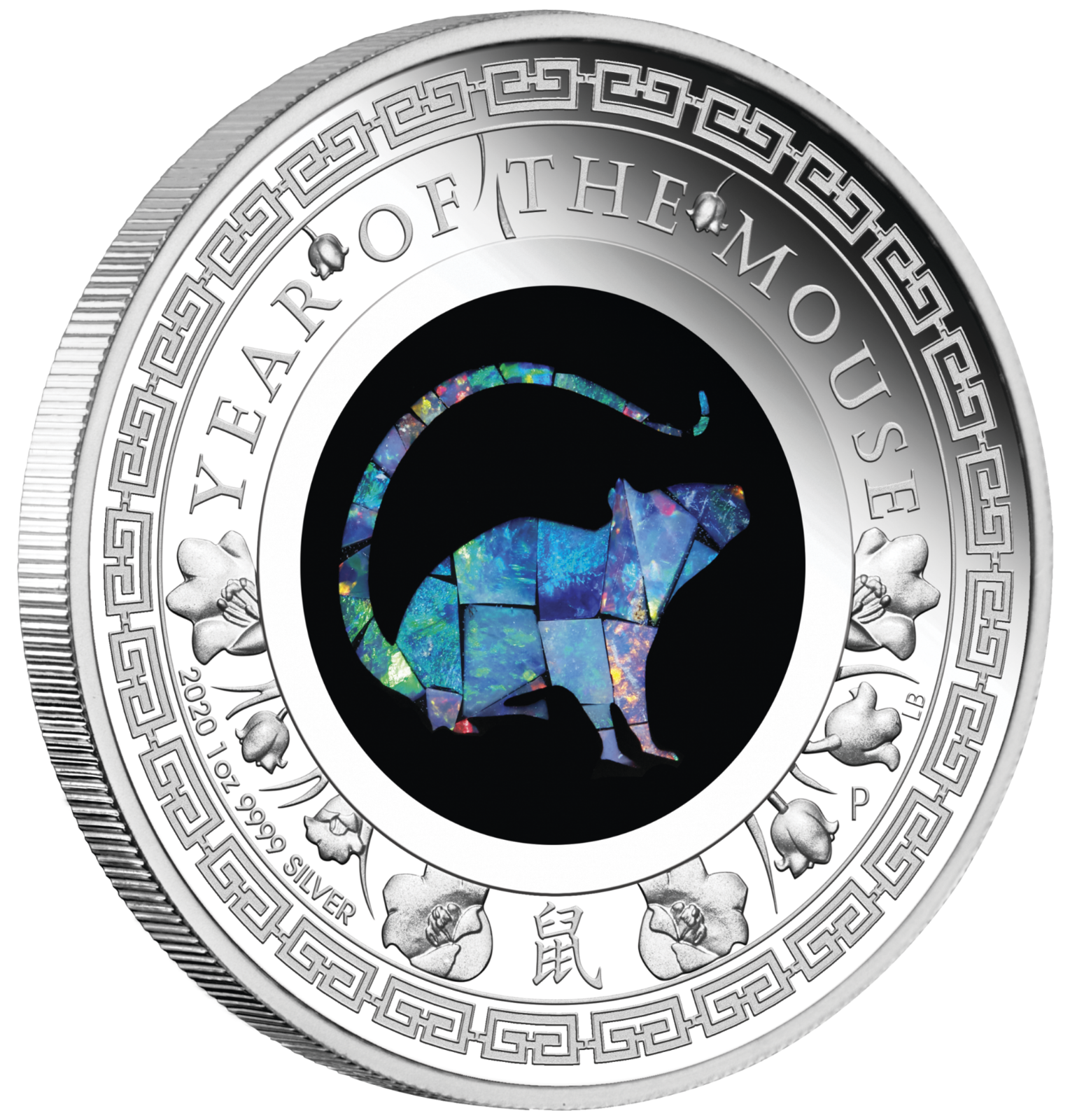-40%
Canada 2012 Group Seven Artists #2 Fishing Village by Lismer Pure Silver Prf
$ 60.69
- Description
- Size Guide
Description
A masterwork of fine art, intricately rendered in pure silver, on this meticulously engraved, low mintage proof beauty!In Stock and Ready for Immediate Shipment!
SOLD OUT at the Canadian Mint!
The
Group of Seven
(sometimes known as the Algonquin School) were a group of significant Canadian landscape painters from 1920 to 1933. Tom Thomson (1877–1917), the seminal Canadian landscape painter, died before its official formation, Thomson had an important influence on the group. His painting "The Jack Pine", the best-known Canadian work of art, is pictured lower in this presentation. Believing that a distinct Canadian artistic style could be developed through direct contact with nature, the Group of Seven is most famous for its paintings inspired by the Canadian landscape, and initiated the first major Canadian national art movement. This masterwork of fine art is expertly captured, meticulously engraved and intricately rendered down to the individual brush strokes on this one ounce,
pure silver
proof-finish gem! With its extremely low mintage limit, a very fast sell out is expected (as happened with the first in the series,
F.H. Varley's
Stormy Weather, Georgian Bay
)!
Click here for all the coins in the Group of Seven Canadian Artists Program!
Nova Scotia Fishing Village
The obverse image of this fine silver, one troy ounce coin reproduces (in finely wrought, engraved detail) a vignette from Arthur Lismer’s 1930 painting
Nova Scotia Fishing Village
. In this detail, we see a robust example of Lismer’s style during a period in which he created some of his most interesting and enduring works. It was around this time, for instance, that Lismer evolved the pattern of dense composition, crude and almost lurid brushwork, and interplay of human and natural landscapes that would become characteristic of his work. The subject is a fishing wharf lined with huts, set against a village on a high bluff in the background. Lobster traps, floats, weights, buoys, barrels, bags, bottles, drying racks, docks, fisherman, shacks, and homes are piled one upon the other, the profuse ephemera of maritime life bursting from the expertly engraved reproduction in layers of mesmerizing detail. The density of this world of objects is emphasized in the dizzying interaction of shapes and the rough, swirling character of Lismer’s brush strokes, skillfully captured by Royal Canadian Mint engravers. Together with the slightly off-kilter vantage point of the painting, these details evoke the fairytale quality of sea lore. The detail from Lismer's painting is surrounded by a ringed frame.
For more information on the painting
Nova Scotia Fishing Village
, please see the article lower in this presentation, below the blue specifications box.
Arthur Lismer 1885-1969
Arthur Lismer's immense contribution to Canadian art is twofold: as a painter and as an influential and dedicated art educator. A man of tireless energy, his active career took him throughout Canada and around the world. He saw art as a universal form of expression, profoundly rewarding for all who took the time to enjoy it.
Born in Sheffield, England, and apprenticed at thirteen to a photo-engraving firm, Lismer spent the next seven years producing black and white art for the local newspaper while studying at the Sheffield School of Art. Struggling as a commercial artist, he soon headed to Canada where he joined the design house of Grip Ltd. in 1911 where he met artists Frank Johnston, J.E.H. MacDonald and Tom Thomson. He was one of four employees who later formed the
Group of Seven
to leave work for Rous and Mann printing house in 1912.
Lismer first visited the Georgian Bay area in 1913 when he was offered the use of a cottage owned by Lawren Harris's friend Dr. James McCallum. It was an initiation to a landscape favored by the artist for the rest of his life. The following year Lismer journeyed for the first time to Algonquin Park, where he and Thomson sketched together. Lismer felt that this was turning point in his life. Lismer's impressionistic style of these earlier years seemed inappropriate for the rugged landscape, and throughout the 1910s, he developed a technique of stronger color and compositional design.
During his career Lismer lectured across Canada and in New York, South Africa, and the South Pacific. Over the years he touched thousands, no doubt altering their outlooks forever. He believed passionately that the pursuit of art and education made life richer with the ability to "see further and deeper than others into the meaning and beauty of life".
For more information on the artist Arthur Lismer, please see the article lower in this presentation, below the blue specifications box.
Click here for more coins and medals featuring art and artists!
The
2012 Arthur Lismer "Nova Scotia Fishing Village" Pure Silver Proof
is the second in the
Group of Seven Canadian Painters Series
. The seven coins planned for this program are:
F.H. Varley -
Stormy Weather, Georgian Bay
Arthur Lismer -
Nova Scotia Fishing Village
Franklin Carmichael -
Houses, Cobalt
Lawren S. Harris -
Toronto Street, Winter Morning
Franz Johnston -
The Guardian of the Gorge
J.E.H. MacDonald -
Sumac
A.Y. Jackson -
Saint-Tite-des-Caps
Click here for all the coins in the Group of Seven Canadian Artists Program!
Investment Note
This Group of Seven Pure Silver Proof has a mintage limit of only 7,000, which is the lowest mintage ever for a Canadian silver proof. We believe that this will be a very scarce issue, difficult to find in the aftermarket, once it is sold out at the Mint.
Click here for more coins highlighting history!
Technology Note
The Royal Canadian Mint refines the purest silver in the world. The RCM is also the only mint in the world to issue commemorative coins in a .9999 fineness. This one ounce silver coin is 99.99% pure!
Click here for more great pure silver coins!
Obverse
A meticulously detailed and finely engraved depiction of a quaint Nova Scotia fishing village. The artistry is so subtle and intricate that the individual brush strokes can be clearly distinguished under a loupe. The traditional-style engraving has produced a magnificent work of beauty. The legend ARTHUR LISMER credits the artist. The date and denomination are also indicated.
Reverse
Her Majesty,
Queen Elizabeth II of England
, in profile facing right. This portrait, the fourth effigy of the queen to appear on Canadian coinage, was executed by the artist Susanna Blunt. The legend ELIZABETH II D. G. REGINA ("Elizabeth II, Queen by the Grace of God") and mint mark also appear.
Click here for more coins and medals featuring art and artists!
Packaging
The coin is encapsulated inside a burgundy leatherette, clamshell-style presentation case, lined with black velvet and protected by a black outer sleeve. An individually-numbered certificate of authenticity is included.
Specifications
Country
Canada
Year of Issue
2012
Face Value
20 Dollars
Weight
31.39 g
Diameter
38.00 mm
Mintage Limit
7,000
Finish
Proof
Composition
.9999 Fine (Pure) Silver
Edge
Serrated (reeded, milled)
Artist
Arthur Lismer
Certificate
Individually Numbered
Complete Certificate Text
The Painting:
Nova Scotia Fishing Village
(1930)
With a busy teaching career, Arthur Lismer found less time to paint after the 1930s; yet it was during this period that he created some of his most interesting and enduring works. It was around this time, for instance, that Lismer evolved the pattern of dense composition, crude and almost lurid brushwork, and interplay of human and natural landscapes that would become characteristic of his work.
In this painting, we see a robust example of Lismer’s style in this era. Lobster traps, floats, weights, buoys, barrels, bags, drying racks, docks, fisherman, shacks, homes—the profuse ephemera of maritime life are piled one upon the other, bursting from the canvas in layers of mesmerizing detail. The density of this world of objects is emphasized in the rough, swirling character of the brushstrokes and the dizzying interaction of shapes. Together with the slightly off-kilter vantage point of the painting, these details evoke the fairytale quality of sea lore.
Click here for all the coins in the Group of Seven Canadian Artists Program!
The Artist: Arthur Lismer
Born in Sheffield, England on June 27, 1885, Arthur Lismer began his artistic career as an apprentice photoengraver in his home town and from 1898 he attended the Sheffield School of Art on a scholarship. In 1906, he traveled to Antwerp to study at Belgium’s Academie Royale des Beaux-Arts.
Following his time in Antwerp, Lismer briefly returned to Sheffield to work in commercial art before emigrating to Toronto early in 1911. He was hired at the famous Grip Limited commercial art firm—an early career point for so many members of the Group of Seven.
Lismer’s primary artistic subject in the pre-war years was northern Ontario’s rocky and tumultuous landscape—a novel terrain for the Englishman. As the years progressed, however, his dedication to teaching grew to be as strong as his passion for painting landscapes. Beginning in Halifax in 1916, as principal of the Victoria School of Art and Design (now the Nova Scotia College of Art and Design), Lismer’s career in art education would take him around the world, founding a number of important and innovative children’s art programs.
In 1917, Lismer witnessed the infamous Halifax Explosion. The accidental collision of a munitions-loaded French ship and a Norwegian ship killed two thousand and injured many thousands more. Lismer published drawings of the event and was commissioned by the Canadian War Records to document the return of troops to Halifax in 1918. A year later, Lismer relocated to Toronto once again and became vice-principal of the Ontario College of Art.
With fellow Group of Seven members in the 1920s, Lismer painted landscapes of northern Ontario and drew numerous caricatures of his colleagues. In the late 1920s, he traveled to western Canada and beginning in the 1930s, he painted throughout the Atlantic provinces. In 1940, he moved to Montreal, where he taught at the Art Association of Montreal (now the Montreal Museum of Fine Arts) into the late 1960s. Lismer died in Montreal on March 23, 1969.
Click here for more coins and medals featuring art and artists!
Talisman World Coins and Medals has been in business for more than 20 years and is one of the largest world coin direct distributors and wholesalers in the world. ANA Life Member.
Copyright © 2012 Talisman World Coins and Medals. All Rights Reserved.
Powered by
ProStores










